Kenneth L. Gentry Jr.'s Blog, page 19
January 26, 2024
TERRY ON REVELATION’S DATE (2)
PMW 2024-008 by Milton S. Terry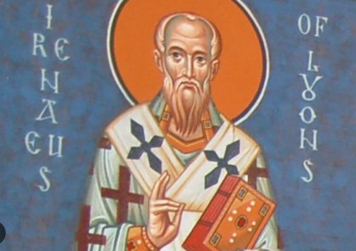
[Gentry note: This is part 2 of Milton S. Terry’s two-part argument for the early date of Revelation]
Jewish persecution
A fair weighing of the arguments thus far adduced shows that they all, excepting the statement of Irenæus, favor the early rather than the later date. The facts appealed to indicate the times before rather than after the destruction of Jerusalem. And this opinion is corroborated by the further consideration that the persecutions of the time proceed from the Jews (Rev. 2:9; 3:9). We know that the persecutions of the apostolic age came chiefly through Jewish instigation and even at the time of Polycarp, we read in Eusebius (Eccl. Hist. 4:15) that the Christian martyr’s death was secured by the fierce zeal of the Jewish population.
Standing temple
The mention, in Revelation 11:1–3, of the temple, the altar, and the court and the mystical designation, in verse 8, of “the great city, which spiritually is called Sodom and Egypt, where also their Lord was crucified,” implies that the city and temple of Jerusalem were not yet overthrown. It is singularly futile to plead that these expressions are symbolical. For, whatever the mystical significance, the whole manner of statement supposes such a knowledge of the temple and the altar as would be unnatural and out of place if in fact the city and temple were then in ruins. But, on the other hand, if these were yet existing and the time of their utter demolition was near at hand, the allusions would be most natural and impressive.
Events proximity
The early date is further supported by the emphatic statement, placed in the very title of the book and repeated in various forms again and again: that the revelation was of “things which must shortly come to pass,” and the time of which was near at hand (Rev. 1:1, 3; 22:6, 7, 10, 12, 20). If we adopt the early date and the terrible catastrophe of the Apocalypse is understood of the ruin of that great city where the Lord was crucified and on which the Lord himself charged the guilt of all the righteous blood of martyrs from Abel unto Zachariah (Matt. 23:34–37), this prophecy has great force and significance in claiming to foretell things of the near future. The statements are thus seen to be true and appropriate. But it is impossible, without subjecting the language to the most unnatural treatment, to explain these time-allusions as referring to events that were not to take place until centuries after the book was written.
The Book of Revelation Made Easy
(by Ken Gentry)
Helpful introduction to Revelation presenting keys for interpreting. Also provides studies of basic issues in Revelation’s story-line.|
See more study materials at: www.KennethGentry.com
666 cryptogram
Another proof of the early date is found in the mystical number 666 in 13:18. This can be legitimately explained as the number of the name NERO CÆSAR, when written in Hebrew characters (see the exposition in loco). This receives additional confirmation in the fact that the book assumes to belong to the period of the sixth king as mentioned in 17:10, ὁ εις ἔστιν (ho eis estin), “the one that now is.” If we follow the most natural method of reckoning the Cæsars and the one which appears in Suetonius and the Sibylline Oracles, we have (1) Julius, (2) Augustus, (3) Tiberius, (4) Caligula, (5) Claudius, (6) Nero. The reign of Nero extended from A.D. 54–68 and somewhere between these dates we may most properly assign the composition of this Apocalypse.
Hebraic langauge
One of the most decisive arguments for the early date is based on the Hebraistic language and style of the author and has been already mentioned in connection with the question of authorship. If the fourth gospel and the Apocalypse are from one writer, the remarkable differences are most naturally explained by supposing the Apocalypse to have been composed many years prior to the gospel. To suppose the contrary is in defiance of all critical observation and experience.
New Testament allusions
There are, finally, several allusions to the Apocalypse in other New Testament writings, which indicate that it must have been one of the earliest written productions of the apostolic times. The contrast of “the Jerusalem that now is and is in bondage with her children,” with “the Jerusalem that is above, which is our mother” (Gal. 4:25, 26), sums up in a few words a large portion of the Apocalypse. This may be most easily explained as an allusion to John’s well-known visions of the new and heavenly Jerusalem. But it is difficult to suppose that the apocalyptic symbolism was drawn from Paul’s brief allegory.
A still more notable allusion appears in Hebrews 12:22–24, which mentions “Mount Zion, the city of the living God, the heavenly Jerusalem, innumerable hosts of angels, the general assembly and church of the firstborn enrolled in heaven and the spirits of just men made perfect.” This points to a number of the most familiar pictures of John’s Apocalypse. To assume that John borrowed this from the Epistle to the Hebrews would involve a most violent literary judgment. Were it a mere question of citation, or the appropriation of a symbol or of a figure, we might readily believe that the apocalyptic writer borrowed from a New Testament source, as he frequently does from the Old Testament. But in this case it would be making John take the warp and woof of his whole book out of the half dozen expressions found in a single passage of the Epistle to the Hebrews.
[image error]For more information and to order click here.
" data-image-caption="" data-medium-file="https://postmillennialismtoday.files...." data-large-file="https://postmillennialismtoday.files...." class="alignright size-full wp-image-209" src="https://postmillennialismtoday.files...." alt="Navigating the Book of Revelation: Special Studies on Important Issues" />Navigating the Book of Revelation (by Ken Gentry)
Technical studies on key issues in Revelation, including the seven-sealed scroll, the cast out temple, Jewish persecution of Christianity, the Babylonian Harlot, and more.
See more study materials at: www.KennethGentry.com
Now, there is no contention that Galatians and Hebrews were written before the destruction of Jerusalem. And to say the least, the most natural explanation of the allusions referred to is to suppose that the Apocalypse was already written and that Paul and many others of his day were familiar with its contents. Writers who cite passages from the apostolic fathers to prove the priority of the gospel of John are the last persons in the world who should presume to dispute the obvious priority of the Apocalypse of John to Galatians and Hebrews. For in no case are the alleged quotations of the Gospel more notable or striking than these allusions to the Apocalypse in the New Testament epistles.
Click on the following images for more information on these studies:
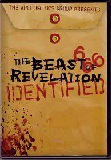

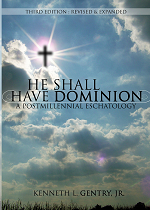
January 22, 2024
TERRY ON REVELATION’S DATE (1)
PMW 2024-007 by Milton S. Terry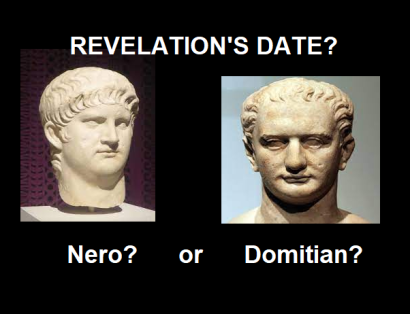
Two different opinions have long prevailed respecting the date of the Apocalypse. One rests mainly on a statement of Irenæus, who seems to place the composition in the latter part of the reign of Domitian (A.D. 96). The other is based upon internal evidence and maintains that the book was written before the destruction of Jerusalem. The most recent criticism, which finds documents of different authorship incorporated in the work, assigns some of the documents to an early and some to a later date. Deferring for the present the several hypotheses of the composite origin of the book, we may briefly state the arguments touching the date as follows:
Irenaeus’ statement
Irenæus, Bishop of Lyons, says that in his boyhood he had conversed with Polycarp and heard him tell of his personal fellowship with the apostle John (Eusebius, Eccl. Hist. 5:20). In speaking of the name of the Antichrist which is concealed in the mystic number given in Revelation 13:18, he says: “If it were necessary to have his name distinctly announced at the present time it would doubtless have been announced by him who saw the Apocalypse; for it was not a great while ago that [it or he] was seen (οὐδὲ γὰρ πρὸ πολλοὺ χρόνου ἑωράθη; oude gar pro pollou chronou eorathe), but almost in our own generation, toward the end of Domitian’s reign” (Irenaeus, Ag. Here. 5:30).
Here the critical reader will observe that the subject of the verb ἑωράθη (eorathe) “was seen,” is ambiguous and may be understood either of John or the Apocalypse. To assert, as some do, that the only grammatical and legitimate construction requires us to understand the Apocalypse rather than John as the subject of the verb is arbitrary and presumptuous. To say the least, in fairness, one construction is as correct and legitimate as the other.
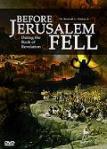
Before Jerusalem Fell Lecture
DVD by Ken Gentry
A summary of the evidence for Revelation’s early date. Helpful, succinct introduction to Revelation’s pre-AD 70 composition.
See more study materials at: www.KennethGentry.com
But why should he say that the book was recently seen? The point he evidently aims to make is that the man who saw the visions of the Apocalypse had lived almost into the times to which Irenæus belonged. Thus, had it been needful to declare the name of the Antichrist, he would himself have done it. The time when John saw the Apocalypse was of no consequence for determining the name of Antichrist so long as the apostle himself was yet alive. There is more reason for believing that the reference is to the Apocalypse [sic: “the Apostle”] in the fact that Irenæus elsewhere says that John lived on into the times of Trajan.
Sparse evidence
But admitting that Irenæus refers to the Apocalypse as having been seen near the close of Domitian’s reign, his ambiguous statement is the only external evidence of any real value for determining the question. All other testimonies are later and, like the numerous statements of Eusebius, seem to be either repeated from Irenæus or based on mere inferences. And it is notorious that even Eusebius, after quoting Irenæus and others, leaves the question of the authorship of the Apocalypse in doubt.
Heretical sects
It has been claimed that the early date is incompatible with the existence of such heretical sects as the Nicolaitans mentioned in Revelation 2:6,15. This must have required more time for their development. But the most rational explanation of the Nicolaitans indicates the very opposite. For these libertines were the first troublers of the Church and the name itself is a symbolical designation for those destroyers of the people, who, like the Balaamites and Jezebelites of the same chapter (vv. 14, 20), taught the mischievous error of licentious freedom, even “to eat things sacrificed to idols and to commit fornication.” These evils were among the earliest with which the Church had to contend (Acts 15:20, 29; 1 Cor. 8:7–13; 6:13–20). There is no conclusive evidence that any sect of this name existed in the early Church. All that writers like Irenæus, Epiphanius, and Tertullian say about their springing from the Nicolas of Acts 6:5, is justly open to suspicion.
Seven churches
It is further argued that the churches of Asia must have existed for some time. Because some had, like Ephesus and Sardis and Laodicea, lapsed from their first love, had become lukewarm, and were ready to die. But such a plea can be allowed no weight in view of the abundant evidence of other defections in apostolic times. How long was it after Paul founded the churches of Galatia that he was compelled to write, “I marvel that ye are so quickly changing from him that called you in the grace of Christ unto a different gospel?” (Gal. 1:6). How soon after his departure did false apostles and deceitful workers and heretical teachers arise in the church of Corinth? See: 1 Corinthians 5:1, 7; 11:18 –21; 15:12; 2 Corinthians 2:17; 11:13; Philippians 3:18; Romans 16:17. There is no apostasy or defection mentioned in connection with the seven churches, which might not have arisen in any Jewish-Gentile church of apostolic times in less than two years after the date of its foundation.
The Early Date of Revelation and the End Times: An Amillennial Partial Preterist Perspective
By Robert Hillegonds
This book presents a strong, contemporary case in support of the early dating of Revelation. He builds on Before Jerusalem Fell and brings additional arguments to bear.
See more study materials at: www.KennethGentry.com
Ecclesiastical bishopric
Some believe that the phrase “angel of the church,” employed at the beginning of each of the epistles, implies an advance in ecclesiastical organization beyond the simple constitution of the first period. This is based on the assumption that angel means bishop and that the Church had no bishops before A.D. 68 who were different from presbyters. But there is no sufficient evidence that some churches were without a special bishop, or responsible pastor, even in apostolic times. And, were this not the case, the opinion that “angel of the church” in the Apocalypse means the pastor, or bishop, is without authority. Much rather is it to be regarded as a symbolical title of the whole Church in its personnel (see our interpretation in loco); for the words both of praise and of censure are obviously intended, not for one individual like the pastor, but for the good of all. They are not addressed to the Church as an organic body (the candlestick), but to its personal constituents, who should all be like so many morning stars (Rev. 2:28; cp. 1 Cor. 15:41).
Laodicean Earthquake
The overthrow of Laodicea by an earthquake (Pliny, Nat. Hist. 5.41; Tacitus, Annals 14.27) has been cited as bearing on this question of date. But, in the first place, it cannot be shown that the church there was destroyed by the earthquake. Furthermore, the statement of Tacitus is that, having been overthrown by an earthquake, the city recovered from its fall in Nero’s reign and regained its former glory by means of its own resources. This corresponds notably with what is said in Revelation 3:17 and shows that the place was in a flourishing condition in the time of Nero. Paul’s reference to this church in Colossians 4:16, abundantly refutes all arguments against the early date which are based on the destruction of Laodicea by earthquake.

Blessed Is He Who Reads: A Primer on the Book of Revelation
By Larry E. Ball
A basic survey of Revelation from an orthodox, evangelical, and Reformed preterist perspective. Ball understands John to be focusing on the destruction of Jerusalem and the temple in AD 70. Insightful. Easy to read.
For more Christian studies see: www.KennethGentry.com
January 19, 2024
TERRY ON AUTHORSHIP OF REVELATION
PMW 2024-006 by Milton S. Terry
The different opinions respecting the authorship of the New Testament books commonly attributed to John may be stated as follows:
1. John, the son of Zebedee, the disciple and apostle of Jesus, was the author of the Apocalypse, the fourth gospel and the three epistles.
2. John the apostle was the author of the Apocalypse, but not of the gospel and the three epistles.
3. John the apostle was the author of the gospel and the three epistles, but not of the Apocalypse.
Those who adopt this third view attribute the Apocalypse either to:
1. A Presbyter John, who is mentioned in early writings.
2. John Mark, the companion of Paul and Barnabas.
3. A John whose only monument is this Book of Revelation and who is otherwise unknown.
Two types of evidence
Our purpose does not call for any extended discussion of these various opinions. But we have discovered no sufficient reason to reject the old and most current tradition that all these Johannean writings are the work of the disciple of our Lord. The external evidence is overwhelmingly in favor of this view and Justin Martyr, Irenæus, Tertullian, Hippolytus, and Origen testify direct testimony that the Apocalypse is the writing of the apostle John. The contrary opinion rests mainly on negative considerations, such as its omission from the early Syriac version and the statement of the Roman presbyter Caius, that it was written by the heretic Cerinthus and published under the name of John in order to obtain for it a claim to apostolic authority.
The more noteworthy objections to the apostolic authorship are based on internal evidence and were well stated by Dionysius of Alexandria (A.D. 250). They have been restated and enlarged by many later writers and have always had weight with critical minds, so that as in the past there will probably ever in the future be not a few who will not be able to concede that the author of the Apocalypse was also the writer of the fourth gospel. The arguments are in substance as follow.
THE APOCALYPSE OF JOHN
by Milton S. Terry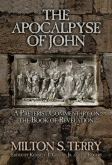
This book is Terry’s preterist commentary on the Book of Revelation. It was originally the last half of his much larger work, Biblical Apocalyptics. It is deeply-exegetical, tightly-argued, and clearly-presented.
For more study materials: https://www.kennethgentry.com/
Internal evidences
1. The apostle does not mention himself by name either in the gospel or in the epistles.
This fact, however, may be sufficiently accounted for by the nature and circumstances of each writing. In a book of prophecy, modeled so conspicuously after that of Daniel, there was special reason for using the forms of expression found in the older apocalyptist. As in the older book there is frequent occurrence of the phrase “I, Daniel” (cp. Daniel 7:15, 28; 7:1,15; 9:2), so the New Testament writer of an apocalypse appropriately employs the words “I, John.”
2. He calls himself servant, brother and partaker in the tribulation (1:1, 9), but not apostle.
It does not appear evident, however, that an apostle could not have appropriately used these expressions and it may be affirmed with much emphasis that there was no other John in the early Church who could have announced himself simply as “John,” and “I, John,” without exposing himself to the charge of unseemly arrogance. Furthermore, he is simply bearing “the testimony of Jesus Christ” to the servants of God and accordingly calls himself most appropriately a servant, brother and fellow partaker “in the tribulation and kingdom and patience in Jesus.” This is in keeping, too, with the tender sympathy of John, the beloved disciple of Jesus.
3. We find in the Apocalypse no trace of apostolical authority, or of the paternal relation assumed in 1 John 2:1; 5:21; 2 John 1; and 3 John 1.
But such authority would have been notably out of place in a book of prophecy like this; and the epistles to the seven churches are in each case announced as coming from the glorified Christ, not from John, who is merely the reporter.
4. It has been urged by some that the names of the twelve apostles on the foundations of the heavenly city (21:14) would have been incongruous in a vision seen by an apostle.
But in view of what Jesus says of the twelve in Matthew 19:28 and what Paul says of the apostles and himself in Ephesians 2:20 and 2 Corinthians 11:5; 12:11, this objection seems trivial and far-fetched. The writer of the vision says nothing of himself personally, but simply states what was shown him.
5. But the most weighty argument is based on the language and style, which are acknowledged on all hands to be very different from what appears in the gospel and the epistles of John. The language of the Apocalypse is peculiarly Hebraistic and Dionysius long ago said that it was notable for its solecisms and barbarous idioms. The book is distinguished for its numerous symbols and visions of things in heaven and on earth; the addresses to the seven churches are stern and lordly, very unlike the manner of John’s epistles.
Instead of the profound, calm and contemplative utterances of the other Johannean writings, we have vivid pictures and symbolic names and numbers. Instead of the spiritual worship taught in the fourth gospel, we have magnificent pictures of cherubim, elders, angels and glorified spirits and all things in heaven and earth and under the earth and on the sea, giving glory to Him who sits upon the throne. The word of God, the Antichrist, the conception of the judgment and the resurrection are all in notable distinction from the same doctrines in the gospel and the epistles. From all these, it is claimed, we must conclude that the author of the Apocalypse is not to be identified with the author of the fourth gospel.

Before Jerusalem Fell Lecture
DVD by Ken Gentry
A summary of the evidence for Revelation’s early date. Helpful, succinct introduction to Revelation’s pre-AD 70 composition.
See more study materials at: www.KennethGentry.com
Response to weightiest argument
The weight and force of this argument cannot be ignored. But for the external testimony, no critic would think of ascribing the Apocalypse to the author of the fourth gospel and the three epistles. Yet this argument from the language and style of thought is largely nullified by three considerations:
First, the subject matter and scope of the Apocalypse place it in a totally different class of literature from that of the gospel and of the epistles. It is a book of prophecy. The addresses to the seven churches are not so much epistles as prophetic messages. The series of visions is not designed to inculcate lessons of Christian doctrine so much as to disclose things which were shortly to come to pass.
Second, being essentially a book of prophecy, not a gospel nor an epistle, it is modeled after the apocalyptic portions of the Hebrew Scriptures. There is scarcely a symbol or figure employed that is not appropriated to some extent from the Old Testament. It is, therefore, not to be supposed that the language, or style of thought, or type of doctrine must resemble those of other productions of the same writer.
Third, the difference of language is further accounted for by the supposition that the Apocalypse was written by the apostle at an early period of his ministry and the gospel and epistles some thirty or forty years later. We may easily believe that John, the Galilean fisherman, wrote just such rough Hebraistic Greek soon after he left Palestine. But after thirty years of life in the midst of a Gentile community, he would naturally have acquired such a command of the Greek language as the fourth gospel shows.
Conclusion
We are accordingly of the opinion that the various arguments against the Johannean authorship of the Apocalypse are not conclusive or sufficient to set aside the best testimony of the early Church. It is not necessary, however, to insist upon maintaining the current tradition of the centuries. The exposition of the book is not dependent upon a certain knowledge of its authorship. The question of its origin is one of those problems of criticism on which there will probably never be uniformity of opinion. Dionysius of Alexandria, while disputing the apostolic origin of the Apocalypse, accepted the book as the production of a holy and inspired man of God. Not a few of the ablest exegetes of modern times adopt the views of Dionysius. It would be a singular infatuation to imagine that God could not have sent this “testimony of Jesus Christ” by some other John than the son of Zebedee.
Click on the following images for more information on these studies:

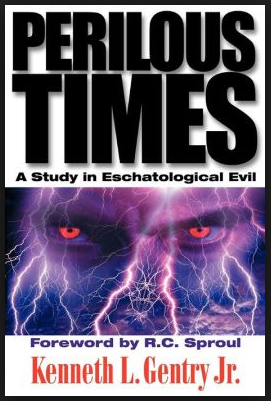
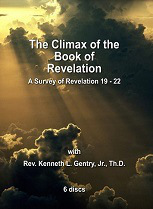
January 16, 2024
WHY CHARAM WARFARE?
PMW 2024-005 by Kenneth L. Gentry, Jr.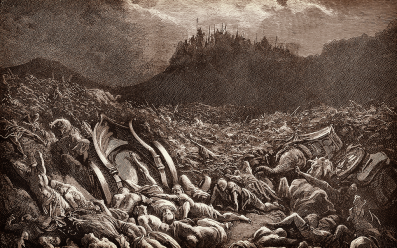
This is one of the most difficult passages in Scripture for the world to accept. It calls for the absolute extermination of the Canaanites (which is pursued in Joshua, e.g., Josh. 10:40).
This is not the destruction of a hapless people who happen to be at the wrong place at the wrong time. Rather God’s wrath is to be executed upon the Canaanites for much the same reasons it was exacted against the entire world in Noah’s day (Gen. 6:5–7, 11–13; 1 Pet. 3:20; 2 Pet. 2:5) and upon Sodom and Gomorrah in Abraham’s day (Gen. 19:13–15, 24–25; cp. Jer. 23:14; Lam. 4:6; 2 Pet. 2:6; Jude 7). That is, this is special charam [Heb., “ban, devoted to destruction”] warfare legislation which calls for the absolute destruction of the Canaanites.
This special warfare was necessary due to the culture-wide (Gen. 15:16; Lev. 18:24–28) and infectious nature (vv. 4, 16, 25; cp. Num. 25:1–3) of Canaan’s sins. Therefore, Israel must rid the land of its evil people who worshiped false gods and committed horrendous atrocities (Lev. 18:21; 20:5, 23; Deut. 9:5; 18:12; 2 Kgs. 16:3; 21:6; 23:10; 2 Chron. 33:6; Eze. 16:21; 20:31; 23:37; Jer. 7:31; 19:5; 32:35; Isa. 30:33; 57:9). The Canaanites were not engaged in occasional sin, but were committed to practiced, cultural abominations. The entire culture had descended to a mature expression of debasement (Gen. 15:16).
It was also necessary for the greater good for the world. Through Israel, God was bringing the Redeemer into the world (Matt. 1:1; Gal. 4:4) and must be provided a land and be protected from destruction. The genealogies in Genesis 5 and chapters 10–11 link Abraham to Adam, thereby tracing the redemptive seed of the woman (Gen. 3:15) from Adam through Noah to Abraham. This catastrophic removal of evil opposition to God was also establishing a place for his law’s righteousness to shine to the world (Deut. 4:6; Isa. 2:2–4; 49:6).
Furthermore, this charam warfare was limited to a particular enemy: the Canaanites in the Promised Land (20:15–17). It is not a common feature of Israelite warfare (cp. 20:10–11). Therefore, it was not built upon a general principle of destruction and cruelty. It was a surgical removal of a particularly nefarious cancer.
Charam warfare also served as a warning of God’s wrath. This led some to acknowledge the true God and others to turn from their warring ways. Rahab turned to God in faith (Josh. 2; see note at Josh 2:9–11). And due to their fear of God through charam war (Josh. 9:3, 24), the Gibeonites turned from their destructive ways and sought peace within Israel (see Josh. 9:19–20 Note). That others did not do so is due to their hardness of heart (Josh. 11:20).

Revelation, God and Man
(24 mp3 lectures by Ken Gentry)
Formal college course on the doctrines of revelation, God, and man.Opens with introduction to the study of systematic theology. Excellent material for personal study or group Bible study. Strongly Reformed and covenantal in orientation.
See more study materials at: www.KennethGentry.com
January 12, 2024
THE DAVIDIC COVENANT “FOREVER”
PMW 2024-004 by Kenneth L. Gentry, Jr.

The Davidic Covenant states that Israel is God’s people forever (2 Sam. 7:24), and that David’s throne is established forever (vv. 13, 16, 25, 29).
We must understand, though, that the very nature of a covenant implies conditions and responsibilities, whether these are stated or not — despite the Davidic Covenant’s seeming unconditionality. Nothing in the Davidic Covenant declare that Israel’s king is freed from the obligation to obey God’s law. Indeed, it is very clear that: (1) God declares that the Davidic dynasty would continue only if it obeys God (e.g., 1 Kgs. 9:4–9; Psa. 132:11–12) and (2) the Davidic line was, in fact, removed from rule about 450 years after David, when the southern kingdom of Judah was defeated by the Babylonians (2 Kgs. 24:11–15).
Nevertheless, the genealogical line of David’s descendants continues until Jesus is born (Matt. 1:1–17; Luke 1:27; Rom. 1:3–4; Rev. 5:5; 22:16). The covenant is then finally fulfilled in Jesus, who rules from heaven over his spiritual kingdom, rather than from Jerusalem over a geo-political kingdom (Luke 1:32; Acts 2:25–36; 1 Pet. 3:22). And his rule will be forever, because he will never fail to be faithful to God (Luke 1:33).
Not only so, but Israel as the people of God is both: (1) expanded in the NT and (2) will return to God before history ends. We see this expanded definition of Israel in the NT when the Gentiles are brought in among God’s people. They become the “Israel of God” (Gal. 6:16; cp. Rom. 9:6), “the circumcision” (Phil. 3:3; cp. Gal. 6:15), the “seed of Abraham” (Gal. 3:7, 29), and so forth. We expect Israel’s revival in that “all the nations” (including Israel!) will be discipled (Matt. 28:18–19), the world (as a system of all nations) will be saved (John 3:17; 1 John 2:2), Jesus will draw “all men” to himself (John 12:32), and Paul speaks of “all Israel” being saved after Gentiles come in to the kingdom in large numbers (Rom. 11:11–26).
Thus, the “forever” nature of David’s kingship looks to the rule of Christ which begins in the New Testament.
Israel in the Bible and History (9 mp3 lectures)

by Ken Gentry
The people of Israel are the people of God. But the modern church is divided over the nature, call and identity of Israel. This lecture series covers key issues for understanding the biblical concept of Israel.
See more study materials at: www.KennethGentry.com
January 9, 2024
SPEAKING IDOL AND JEWISH TEMPLE
PMT 2024-003 by Kenneth L. Gentry, Jr.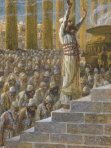
Here in Rev the temple speaks as an image of the emperor-god. When the Pharisees rebuke Christ for not stopping those who praise him at the triumphal entry, “He answered and said, ‘I tell you, if these become silent, the stones will cry out!’” (Lk 19:40). This probably signifies that the stones of the temple will declare him when not one is left on another in AD 70 (cp. Lk 21:5-6) (See: R. C. H. Lenski, Luke, 966; E. E. Ellis, Luke [NCBC], 226). Prosopopoiia clearly appears as a major feature in the later chapters in Rev where two cities are presented as women, one an evil harlot, the other a righteous bride (Rev 17; 21).
Beckwith (Apocalypse, 680) surmises that the altar speaking in 16:7 really represents the voices of the souls at the altar (6:9) or the prayers of the saints at the heavenly altar (8:3-5). If this is preferred, then the image speaking (which represents the physical temple speaking) would indicate decrees from the temple authorities. It could suggest either the deceptive liturgy of the temple that keeps the Land-dwellers under control or the death decrees sent out from it against “apostate” Christians.
Pushing the Antithesis (by Ken Gentry)
Sub-title: The Apologetic Methodology of Greg L. Bahnsen
See more study materials at: www.KennethGentry.com
On many occasions the Lord rejects his own worship forms when the people are in sin. “So when you spread out your hands in prayer, / I will hide My eyes from you, / Yes, even though you multiply prayers, / I will not listen” (Isa 1:15). Israel must “not trust in deceptive words, saying, ‘This is the temple of the Lord, the temple of the Lord, the temple of the Lord’” (Jer 7:4). In fact, Jeremiah repeatedly denounces lies and deception from false prophets at the first temple’s destruction (Jer 14:14; 23:21; 27:14-15; 28:15; 29:8). In the face of unbelief and abuse, the temple liturgy becomes a statement offering false comfort — even the well-known, God-inspired Aaronic benediction: “The Lord bless you, and keep you; / The Lord make His face shine on you, / And be gracious to you; / The Lord lift up His countenance on you, / And give you peace” (Nu 6:24-26).
We know that the temple authorities give orders that Jesus be seized (Jn 11:47, 53, 57; 18:3, 12–14). These religious leaders seek his death in order to protect their own positions (Jn 11:48, 53; cp. Jn 5:18; 7:1, 19; Mt 17:23; 26:4// ). And after his death they command the apostles to quit preaching Christ or suffer flogging or death (Ac 4:1-3, 5-7, 17-21; 5:17-18, 21, 25-28, 33, 40; 9:2; 22:5; cp. 28:21). And floggings (Mt 10:17-18; 2Co 11:23) are official actions of a court (Dt 25:2; m. Mid. 2:2; m. Moe’ed Qat. 3:1-2), not mob actions. While the temple stands with its religious rulers it has the power to destructively “speak” against the Lamb and his followers.
Those who do not follow the temple authorities, separate from the temple, and cease the (now) empty liturgy must face the land beast who will “cause as many as do not worship the image of the beast to be killed” (13:15b). This refers to the Jewish followers of the Lamb. According to John in his Gospel, Jesus warns his first disciples that “they will make you outcasts from the synagogue, but an hour is coming for everyone who kills you to think that he is offering service [latreia] to God” (Jn 16:2). The word “service” (latreia) is employed “in cultic usage” (BAGD 586) as in temple ministrations. In fact, the verb form occurs “only of the carrying out of religious duties, esp. of a cultic nature” (BAGD 587).
Christ’s statement implies that killing a disciple of his is used “in the sense of offering a sacrifice” (EDNT 2:344, 345). Carson (1991: 531) points out the following as “evidence that some rabbinic authorities held that slaying heretics could be an act of divine worship”: Num. Rab. 21:3 (191a) and Sanh. 9:6.
Secret Thoughts of an Unlikely Convert (by Rosaria Butterfield)
Remarkable testimony of a lesbian professor who was a leading spokesperson
for the feminist movement, but whom Christ saved.
See more study materials at: www.KennethGentry.com
E. Corsini (The Apocalypse, 1983: 252) explains that: “the allegory of the statue which speaks and issues sentences of death at the wicked suggestions of corrupt religious authorities which stands at its shoulders (13:15), it is not difficult to see the complex intrigue which grew between the High Priest and the Roman authorities which led to the death of Jesus. John sees this as happening daily in his own situation. . . . In fact, as Jesus himself recalls (Matt 23:29ff), the prophets and those sent by God were stoned and slain always with the direct or indirect approval of Jewish religious authority.”
January 5, 2024
TEMPLE MEASURING AND EZEKIEL
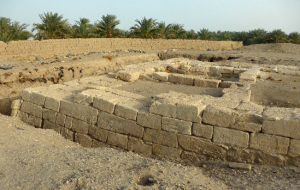 PMW 2024-002 by Kenneth L. Gentry, Jr.
PMW 2024-002 by Kenneth L. Gentry, Jr.
I appreciate the questions readers send to me. I regret that I am not able to answer them quickly, due to my schedule. However, here is one that is a favorite among dispensationalists. And it is an intriguing one.
Reader’s question:
You argue that John must be measuring an actual, historical temple in Rev 11:1-2. Yet Ezekiel measures a temple, even though it does not exist in history. This suggests that the temple does not need to exist for John to measure it. How do you explain this problem for your view?
My response:
Thanks for your perceptive question. Please consider the following response.
Ezekiel’s prophecy expressly tells us that Israel has been attacked and destroyed. He opens with this statement: “Now it came about in the thirtieth year, on the fifth day of the fourth month, while I was by the river Chebar among the exiles, the heavens were opened and I saw visions of God.” (Ezekiel 1:1.) He is among the exiles because Jerusalem has been attacked and destroyed. Everyone knows that the temple was destroyed in these events.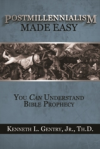
Postmillennialism Made Easy (by Ken Gentry)
Basic introduction to postmillennialism. Presents the essence of the postmillennial argument and answers the leading objections. And all in a succinct, introductory fashion.
See more study materials at: www.KennethGentry.com
Furthermore in Eze 40 where Ezekiel begins the measuring, he opens this vision with: “In the twenty-fifth year of our exile, at the beginning of the year, on the tenth of the month, in the fourteenth year after the city was taken, on that same day the hand of the Lord was upon me and He brought me there” (Ezekiel 40:1). Thus, he introduces the temple vision with words that show the historical temple no longer exists.
Just before this prophecy of the measuring, Ezekiel is promised by God: “Therefore thus says the Lord God, “‘Now I shall restore the fortunes of Jacob, and have mercy on the whole house of Israel; and I shall be jealous for My holy name'” (Ezekiel 39:25).
After he measures the temple, he writes:
“Then he led me to the gate, the gate facing toward the east; and behold, the glory of the God of Israel was coming from the way of the east. And His voice was like the sound of many waters; and the earth shone with His glory. And it was like the appearance of the vision which I saw, like the vision which I saw when He came to destroy the city. And the visions were like the vision which I saw by the river Chebar; and I fell on my face. (Ezekiel 43:1-3).
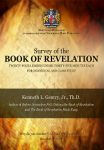
Survey of the Book of Revelation
(DVDs by Ken Gentry)
Twenty-four careful, down-to-earth lectures provide a basic introduction to and survey of the entire Book of Revelation. Professionally produced lectures of 30-35 minutes length.
See more study materials at: www.KennethGentry.com
And He said to me, “Son of man, this is the place of My throne and the place of the soles of My feet, where I will [future tense] dwell among the sons of Israel forever.” (Ezekiel 43:7a).
Consequently, even a surface reading of Ezekiel repeatedly reminds the reader that the city (and thus the temple) is destroyed and the people exiled. But in Revelation there is no indication that he is having a vision of a future rebuilt temple. The clear implication is that the temple is standing but is in danger.
OLIVET IN CONTEXT: A Commentary on Matthew 21–25
I am currently researching a commentary on Matthew 21–25, the literary context of the Olivet Discourse from Matthew’s perspective. My research will demonstrate that Matthew’s presentation demands that the Olivet Discourse refer to AD 70 (Matt. 24:3–35) as an event that anticipates the Final Judgment at the Second Advent (Matt. 24:36–25:46). This will explode the myth that Jesus was a Jewish sage focusing only on Israel. The commentary will be about 250 pages in length.
If you would like to support me in my research, I invite you to consider giving a tax-deductible contribution to my research and writing ministry: GoodBirth Ministries. Your help is much appreciated!
January 2, 2024
THE TEMPLE IN REVELATION 11
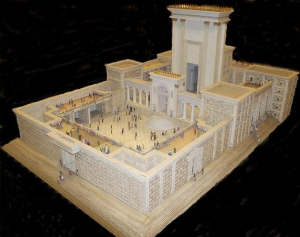 PMW 2024-001 by Kenneth L. Gentry, Jr.
PMW 2024-001 by Kenneth L. Gentry, Jr.
Revelation is an important book in eschatological discussions. The most vigorous Revelation debate in ecclesiastical circles today revolves around the dispute between preterism and futurism. Preterism holds that Revelation was largely fulfilled not long after John wrote it. Futurism holds that it deals largely with events yet to come.
Because of this debate, the identity of the temple in Rev 11 arises as a serious matter. In Revelation 11:1, 2 we read:
And there was given me a reed like unto a rod: and the angel stood, saying, Rise, and measure the temple of God, and the altar, and them that worship therein. But the court which is without the temple leave out, and measure it not; for it is given unto the Gentiles: and the holy city shall they tread under foot forty and two months.
Here we find a Temple standing in a city called “the holy city.” Surely John, a Christian Jew, has in mind historical Jerusalem when he speaks of “the holy city.” This seems necessary in that John is writing scripture and Jerusalem is frequently called the “holy city” in the Bible. For example: Isaiah 48:2; 52:1; Daniel 9:24; Nehemiah 11:1-18; Matthew 4:5; 27:53.
In addition, verse 8 informs us that this is the city where “also our Lord was crucified.” This was historical Jerusalem, according to the clear testimony of Scripture (Luke 9:22; 13:32; 17:11; 19:28). Interestingly, historical Jerusalem is never mentioned by name in Revelation. This may be due to the name “Jerusalem” meaning “city of peace.” In Revelation the meanings of specific names are important to the dramatic imagery. And so it would be inappropriate to apply the name “Jerusalem” to the city upon which woe and destruction are wreaked.
Before Jerusalem Fell (Kindle version) (by Ken Gentry)
Doctoral dissertation defending a pre-AD 70 date for Revelation’s writing. Thoroughly covers internal evidence from Revelation, external evidence from history, and objections to the early date by scholars.
See more study materials at: www.KennethGentry.com
Now what Temple stood in Jerusalem? Obviously the Jewish Temple ordained of God, wherein the Jewish sacrifices were offered. In the first century it was known as Herod’s Temple. This reference to the Temple must be that historical structure for four reasons:
(1) It was located in Jerusalem, as the text clearly states in verse 8. This can only refer to
the Herodian Temple, which appears over and over again in the New Testament record. It was the very Temple which was even the subject of one of Christ’s longer prophetic discourses (Matt. 23:37-24:2ff).
(2) Revelation 11:1, 2, written by the beloved disciple and hearer of Christ, seems clearly to draw upon Jesus’ statement from the Olivet Discourse. In Luke 21:5-7, the disciples specifically point to the Herodian Temple to inquire of its future; in Revelation 11:1 John specifically speaks of the Temple of God. In Luke 21:6 Jesus tells his disciples that the Temple will soon be destroyed stone by stone. A comparison of Luke 21:24 and Revelation 11:2 strongly suggests that the source of Revelation’s statement is Christ’s word in Luke 21.
• Luke 21:24b: “Jerusalem will be trampled underfoot by the Gentiles until the times of the Gentiles be fulfilled.”
• Revelation 11:2b: “it is given unto the Gentiles: and the holy city shall they tread under foot for forty and two months.”
The two passages speak of the same unique event and even employ virtually identical terms.
(3) According to Revelation 11:2 Jerusalem and the Temple were to be under assault for a period of forty-two months. We know from history that the Jewish War with Rome was formally engaged in Spring, A.D. 67, and was won with the collapse of the Temple in August, A.D. 70. This is a period of forty-two months, which fits the precise measurement of John’s prophecy. Thus, John’s prophecy antedates the outbreak of the Jewish War.
Four Views on the Book of Revelation
(ed. by Marvin Pate)
Helpful presentation of four approaches to Revelation. Ken Gentry writes the chapter on the preterist approach to Revelation, which provides a 50 page survey of Revelation .
See more study materials at: www.KennethGentry.com
(4) After the reference to the destruction of the “temple of God” in the “holy city,” John later speaks of a “new Jerusalem” coming down out of heaven, which is called the “holy city” (Rev. 21:2) and which does not need a temple (Rev. 21:22). This new Jerusalem is apparently meant to supplant the old Jerusalem with its temple system. The old order Temple was destroyed in August, A.D. 70.
Thus, while John wrote, the Temple was still standing, awaiting its approaching doom. If John wrote this twenty-five years after the Temple’s fall it would be terribly anachronous. The reference to the Temple is hard architectural evidence that gets us back into an era pre-A.D. 70.
December 29, 2023
WHERE DO WE GO AT DEATH?
PMW 2023-100 by Kenneth L. Gentry, Jr.
A writer sent a note asking:
“One thing I’m a little confused about is the ultimate end of history. Does man remain on earth when Christ returns? After Christ has put all enemies under his feet and handed over the kingdom to the Father, does heaven and hell “merge” and man remains on earth for a lack of better words while Christ is present physically (assuming also still in some sense everywhere present because he’s God). I’m so confused as I feel like I always hear by and large from Christians is to just go to heaven and it seems many believe the present earth to be destroyed. Or is there something else beyond earth/heaven?”
Ken Gentry responds:
Basically, I believe that when we die now (in history) we go to heaven — as did the disciples, the thief on the cross, and Paul the apostle:
To the thief, Jesus said in Luke 23:43: “Truly I say to you, today you shall be with Me in Paradise.”
To the disciples the Lord promised in John 14:2–3: “In My Father’s house are many dwelling places; if it were not so, I would have told you; for I go to prepare a place for you. If I go and prepare a place for you, I will come again and receive you to Myself, that where I am, there you may be also.” (This “coming” refers to his coming to each of them at their physical deaths, otherwise they would not enter into glory until the end of history.)
Paul stated in Phil 1:21–24: “For to me, to live is Christ and to die is gain. But if I am to live on in the flesh, this will mean fruitful labor for me; and I do not know which to choose. But I am hard-pressed from both directions, having the desire to depart and be with Christ, for that is very much better; yet to remain on in the flesh is more necessary for your sake.”
Tongues-speaking: Meaning, Purpose, and Cessation
 by Ken Gentry
by Ken Gentry
The position presented within is that tongues-speaking allowed the gift person to speak in a known human language without previously knowing it; tongues brought inspired revelation from God; the gift was a sign confirming the apostolic witness and warning of the coming destruction of Jerusalem; and therefore the gift ceased in the first century.
See more study materials at: www.KennethGentry.com
But at the end of history when the Lord returns we will be given our physical, resurrected, final bodies that are incorruptible: “Now I say this, brethren, that flesh and blood cannot inherit the kingdom of God; nor does the perishable inherit the imperishable. Behold, I tell you a mystery; we will not all sleep, but we will all be changed, in a moment, in the twinkling of an eye, at the last trumpet; for the trumpet will sound, and the dead will be raised imperishable, and we will be changed. For this perishable must put on the imperishable, and this mortal must put on immortality” (1 Cor 15:50-53).
This transformation of our bodies will be on “the last day”: “This is the will of Him who sent Me, that of all that He has given Me I lose nothing, but raise it up on the last day. (John 6:39). These bodies are designed for a physical realm rather than a spiritual realm. After all, God created angels as spirits: “Are they not all ministering spirits, sent out to render service for the sake of those who will inherit salvation?” (Heb. 1:14). Whereas God created us a physical creatures designed for a physical world: “Then the LORD God formed man of dust from the ground, and breathed into his nostrils the breath of life; and man became a living being” (Gen. 2:7).
So on “the last day” God will re-fashion the earth and we will enter the consummate, final new earth: “But the day of the Lord will come like a thief, in which the heavens will pass away with a roar and the elements will be destroyed with intense heat, and the earth and its works will be burned up. Since all these things are to be destroyed in this way, what sort of people ought you to be in holy conduct and godliness, looking for and hastening the coming of the day of God, because of which the heavens will be destroyed by burning, and the elements will melt with intense heat! But according to His promise we are looking for new heavens and a new earth, in which righteousness dwells” (2 Pet 3:10–13).
Thus, we now enjoy the spiritual preparation for the consummate new creation: we are spiritually new creations in Christ: “Therefore if anyone is in Christ, he is a new creature; the old things passed away; behold, new things have come” (2 Cor 5:17). And we have been spiritually resurrected: “God, being rich in mercy, because of His great love with which He loved us, even when we were dead in our transgressions, made us alive together with Christ (by grace you have been saved), and raised us up with Him, and seated us with Him in the heavenly places in Christ Jesus” (Eph 2:4–6; cp. John 5:25). But then on the last day we will be physically resurrected for the physical new creation.
Three Views on the Millennium and Beyond
(ed. by Darrell Bock)
Presents three views on the millennium: progressive dispensationalist, amillennialist, and reconstructionist postmillennialist viewpoints. Includes separate responses to each view. Ken Gentry provides the postmillennial contribution.
See more study materials at: www.KennethGentry.com
This theological perspective is called the “Now / But Not Yet” approach. That is, we now spiritually enjoy — by way of anticipation — the future full, glorious reality to come. Jesus links these two realities for us in John 5:25–29:
“Truly, truly, I say to you, an hour is coming and now is, when the dead will hear the voice of the Son of God, and those who hear will live. For just as the Father has life in Himself, even so He gave to the Son also to have life in Himself; and He gave Him authority to execute judgment, because He is the Son of Man. Do not marvel at this; for an hour is coming, in which all who are in the tombs will hear His voice, and will come forth; those who did the good deeds to a resurrection of life, those who committed the evil deeds to a resurrection of judgment.”
December 26, 2023
INTERPRETING MESSIANIC PSALMS
 PMW 2023-099 R. T. France
PMW 2023-099 R. T. France
I am reading R. T. France’s excellent work, Jesus and the Old Testament. He has much that is helpful for the postmillennialist and the (orthodox) preterist. Below I will quote three paragraphs that ought to be an encouragement to my readers. These present to us a helpful hermeneutic approach to many Old Testament passages.
I am sure France did not intend them as postmillennial observations, but they do help us in understanding the postmillennial hope nonetheless.
On p. 86 of France’s Jesus and the Old Testament, we read:
[The Royal Psalms], like the “Messianic” prophecies referred to above, arise out of, and have a primary reference to, historical situations, but this does not diminish the fact that they have a true, intended, eschatological reference. “The Sitz im Leben [“situation in life”] is not a kind of ceiling above which the thought of the pertinent Old Testament passages cannot rise, but is a springboard from which the though leaps beyond the immediate occasion” [citing R. H. Gundry].
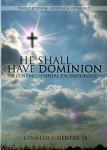
He Shall Have Dominion
(paperback by Kenneth Gentry)
A classic, thorough explanation and defense of postmillennialism (600+ pages). Complete with several chapters answering specific objections.
See more study materials at: www.KennethGentry.com
Thus the eschatological hopes of the Old Testament are not confined to passages which specifically mention “the day of Yahweh,” etc. Both in the prophets and in the psalms it is not only legitimate, but true to the intention of the author, to see in many passages, whose primary reference is to contemporary history, the hopes of that glorious future which was to be brought about by the decisive act of God, when the ideal would be realized.
But eschatology, even in the pre-exilic prophets, is not confined to this secondary application. From Amos to the Exile, and beyond, we find frequent explicit predictions of the “day of Yahweh.” Expressions such as “in that day” and “the days are coming” give further evidence of a continuing expectation of the day of Yahweh, a decisive time of judgment (on the nations, and on Israel herself) and restoration.
While similar phrases sometime refer to definite acts of judgment in the near future, this cannot be said of expressions like “in the end of days” [Hos. 3:5; Isa. 2:2; Mic. 4:1; Eze. 38:8, 16], nor of the pictures of the coming golden age such as occur in Isaiah 11:1–9 or Zephaniah 3:11–20; the universal character of the work of God so described demands an eschatological frame of reference. It may not be easy, or even desirable, to separate the historical from the eschatological; ;the immediate and the distant future are generally tantalizingly telescoped in a single perspective. But at many points there can be no doubt that what the prophet looked for was the end of the present order of things and a new beginning, brought about by a decisive act of God; and that is eschatology.
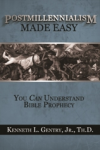
Postmillennialism Made Easy (by Ken Gentry)
Basic introduction to postmillennialism. Presents the essence of the postmillennial argument and answers the leading objections. And all in a succinct, introductory fashion.
See more study materials at: www.KennethGentry.com
Gentry comment:
Elsewhere in this work, France shows that prophecies such as the gathering of Israel actually refer to the formation of the new Israel of God, the new covenant church (cf. pp. 55ff, 74ff). France is always a worthwhile read. I highly recommend him to you.
JESUS, MATTHEW, AND OLIVET
I am currently researching a commentary on Matthew 21–25, the literary context of the Olivet Discourse from Matthew’s perspective. My research will demonstrate that Matthew’s presentation demands that the Olivet Discourse refer to AD 70 (Matt. 24:3–35) as an event that anticipates the Final Judgment at the Second Advent (Matt. 24:36–25:46). This will explode the myth that Jesus was a Jewish sage focusing only on Israel. The commentary will be about 250 pages in length.
If you would like to support me in my research, I invite you to consider giving a tax-deductible contribution to my research and writing ministry: GoodBirth Ministries Your help is much appreciated!
Kenneth L. Gentry Jr.'s Blog
- Kenneth L. Gentry Jr.'s profile
- 85 followers





